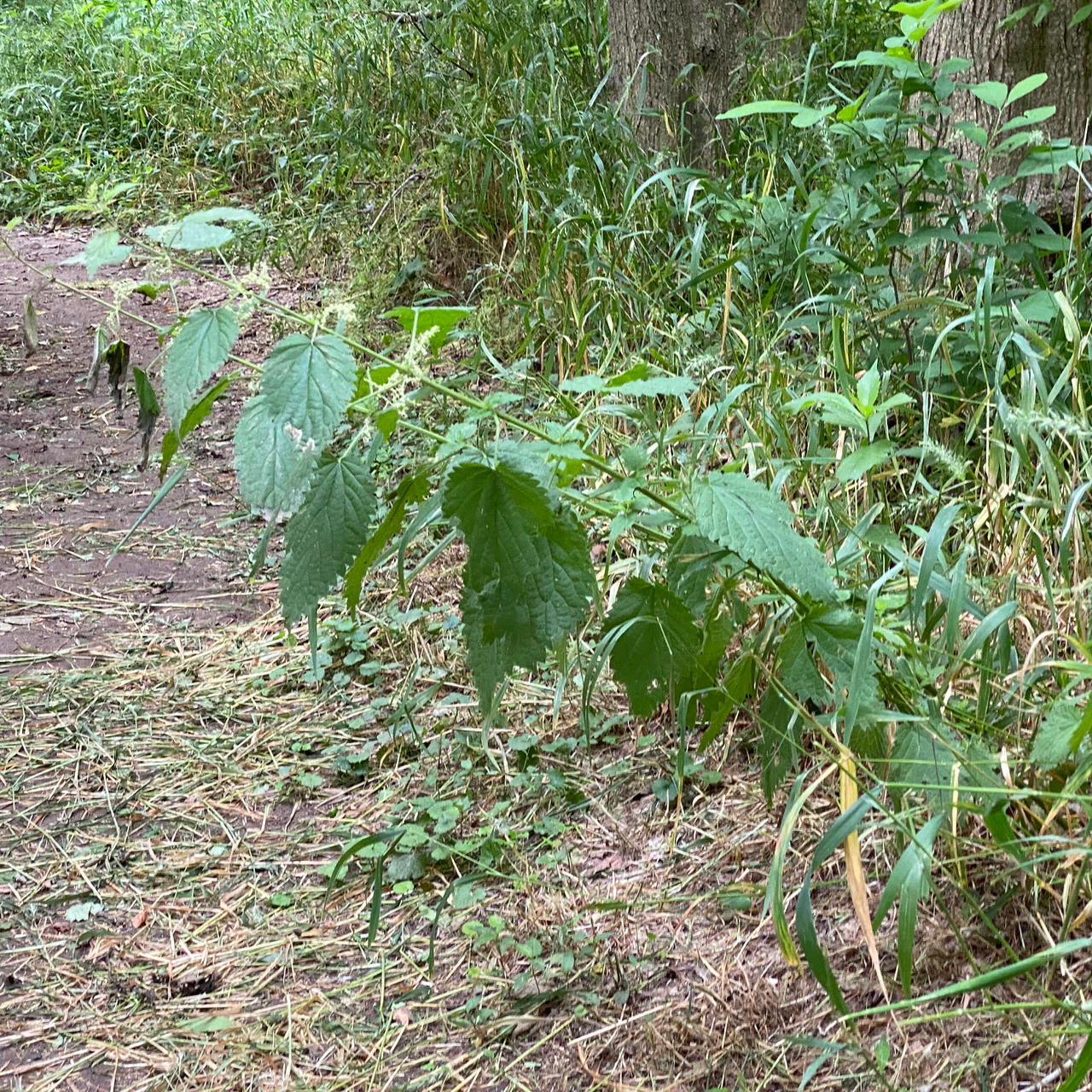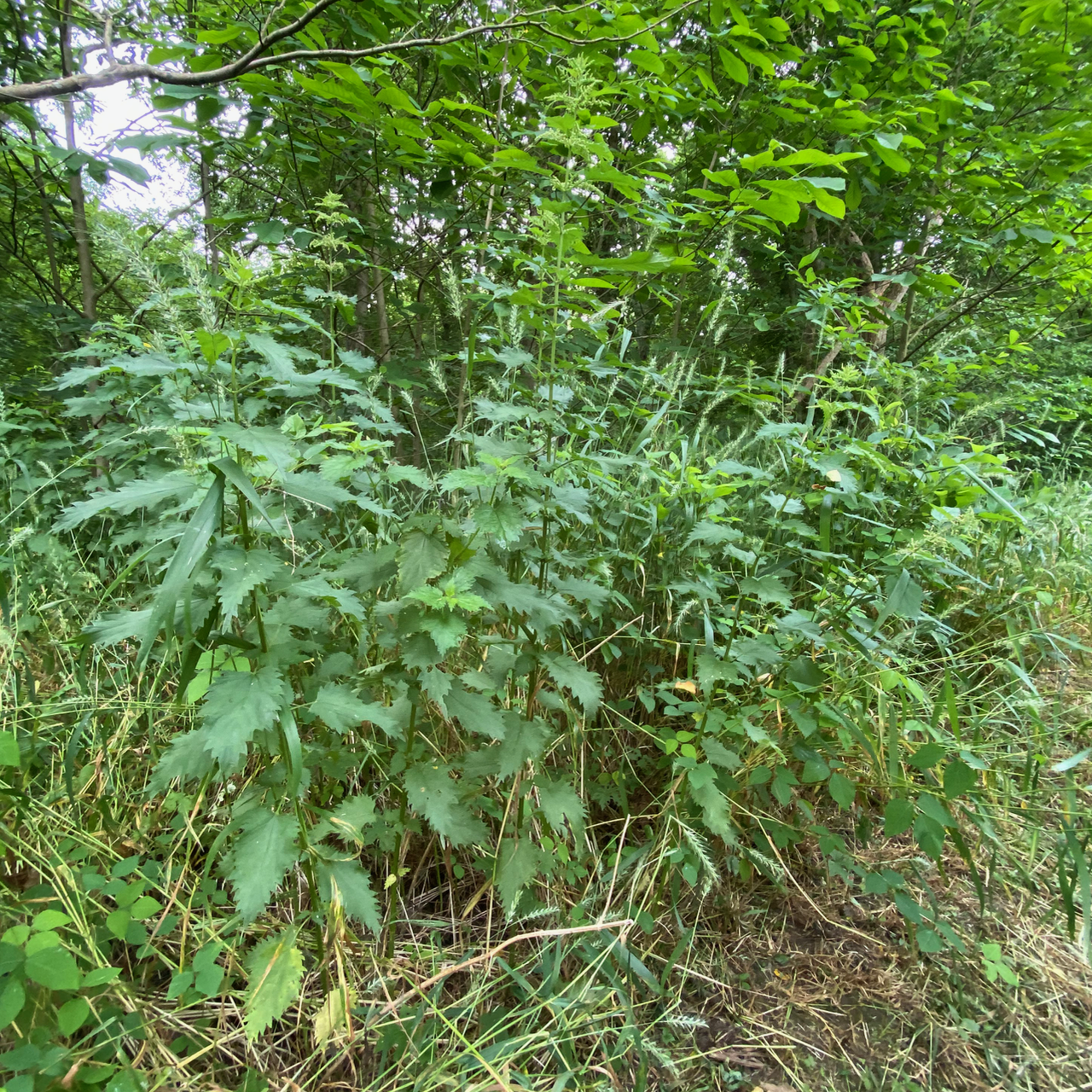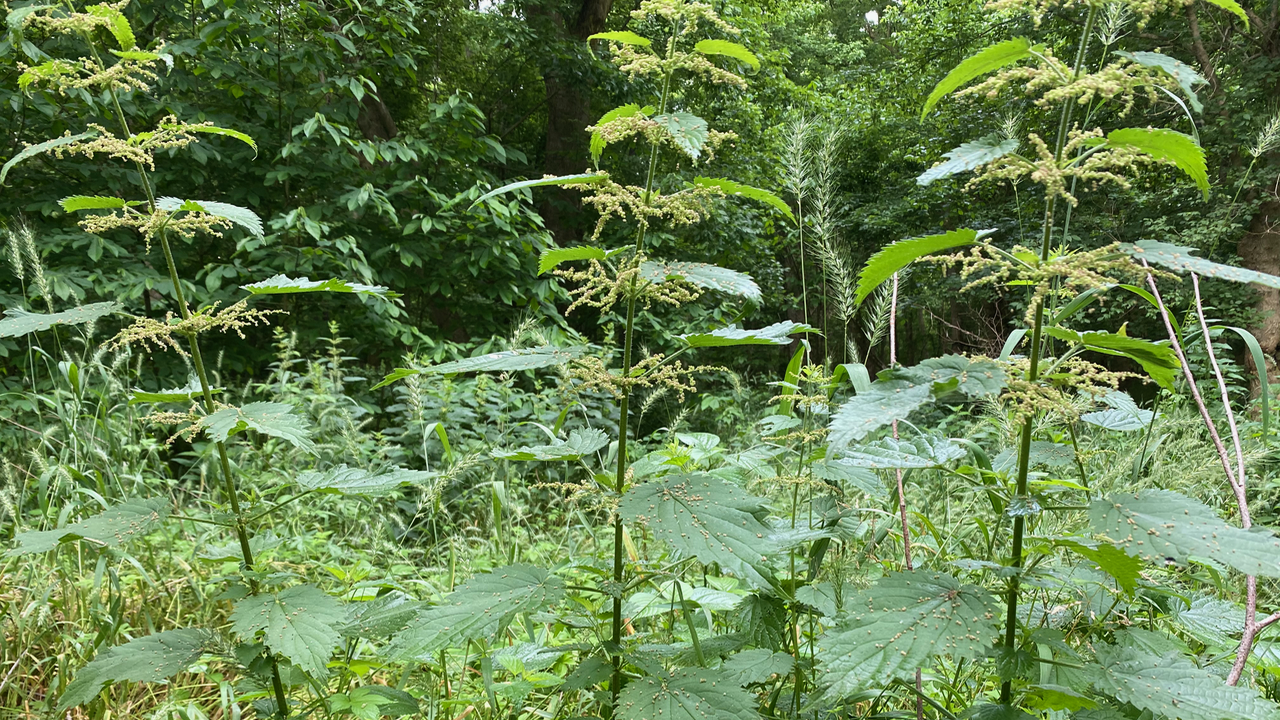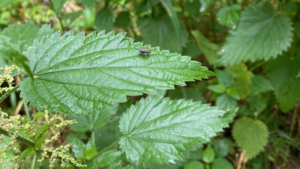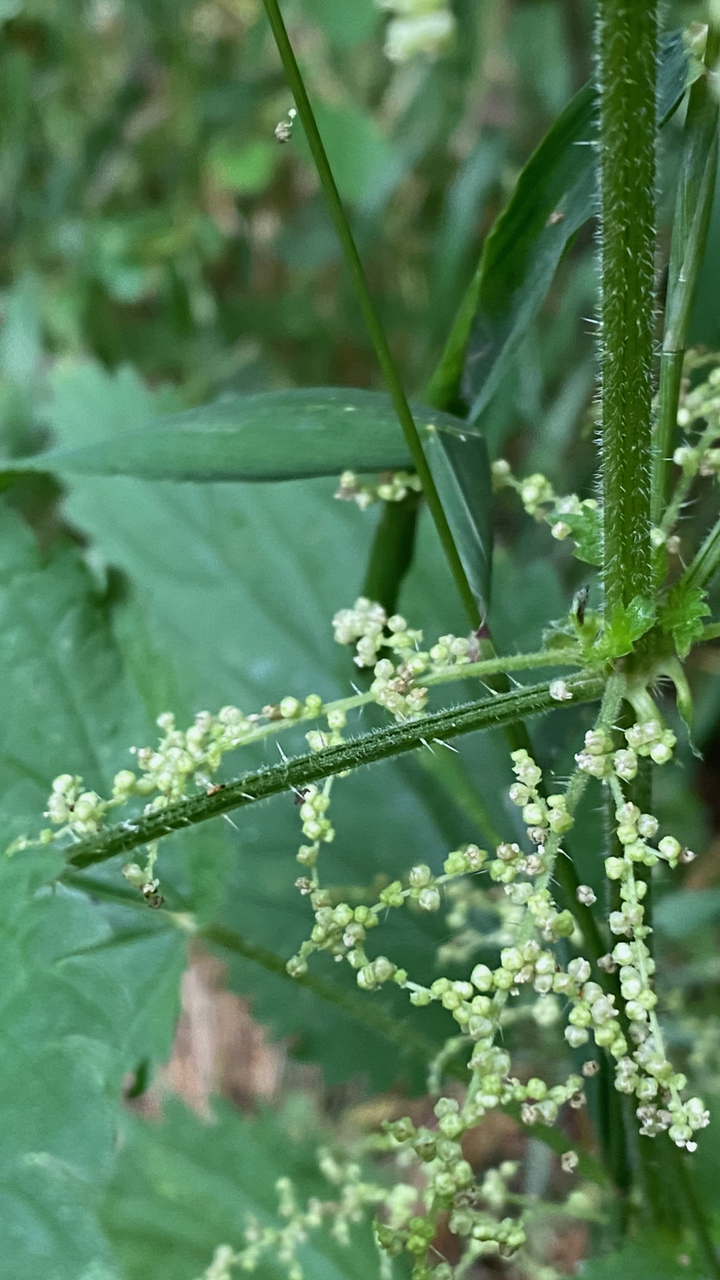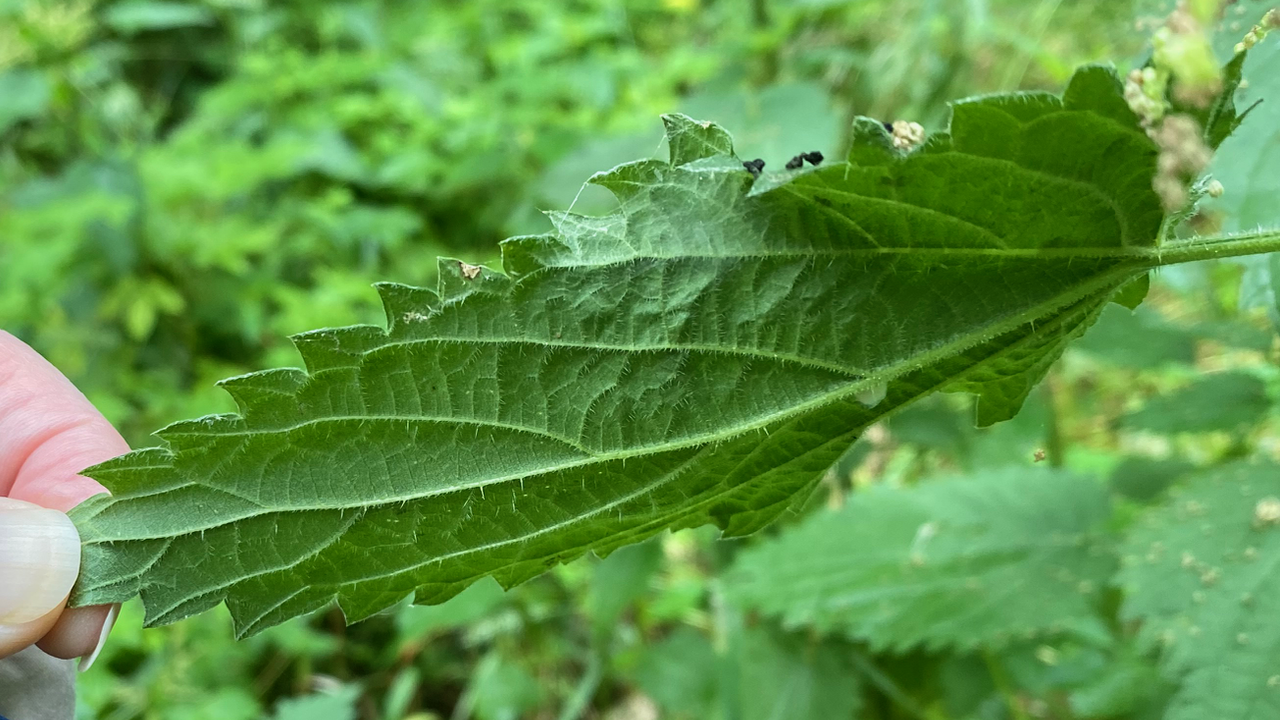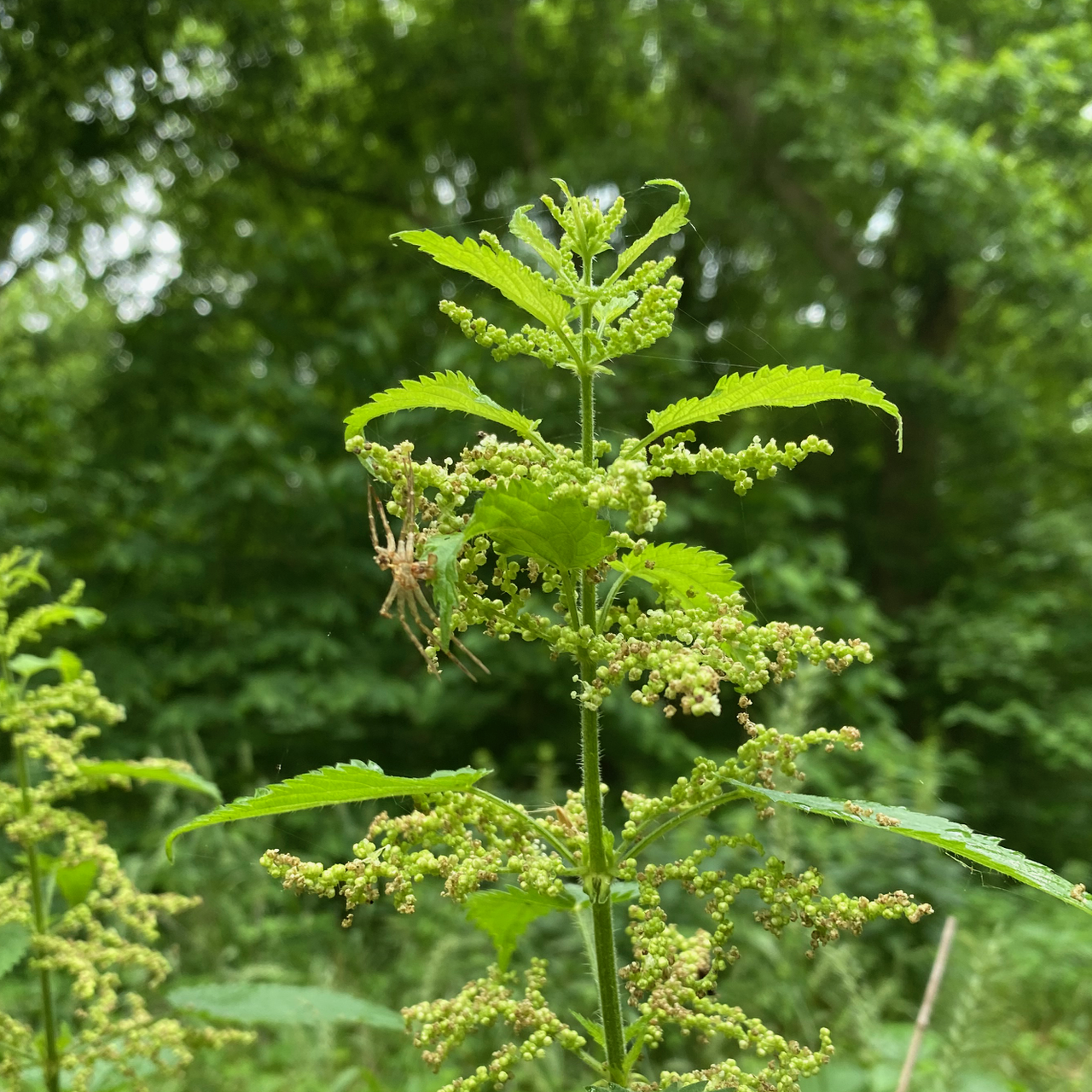I love to go hiking or trail running. I get irritated when I brush up against stinging nettle. I’ve hiked long enough to know better. I’ll be more aware now that I’ve written this post. Find out more, and maybe you can avoid the sting too.
Origins: Native and Introduced
Stinging nettles are an herbaceous perennial flowering plant in the Urticaceae family. They are another plant that some call a weed, however others call a medicinal herb. There are two varieties in North America. Urtica dioica var. procera is native to North American. Urtica dioica var. dioica was introduced from Europe. The European variety is more toxic. It is also uncommon. Therefore, I am assuming that I photographed are the native variety.
Stinging Nettle Growth Patterns
Nettles like damp nutrient rich soil. They are found in a variety of pasture type grassy settings, stream beds and edges, and forest edges. Stinging nettle tolerates partial sun, however it does not tolerate full shade.
In optimal conditions, it grows to 6 feet tall. The plant self propagates by rhizomes. Rhizomes are like runners that grow horizontally underground. They grow and extend up to 5 feet in one season. Fibrous roots grow down from the rhizomes, while more plant material grows up. To clarify, rhizomes are like runners along the ground. They form an extensive mat or network of root material. Therefore, nettle usually is found in patches or colonies. As a result, it is hard to eradicate. It is a similar growing concept to colonies of Aspen trees.
Identifying Stinging Nettle
Stems
Stems are singular. The lower parts are almost always covered with stinging hairs. Stems are more square than round. That should make identification easier, however the square stem was not that obvious to me.
Leaves
Leaves are various colors of green. They are alternate on the stems with saw toothed edges. Common leaf shapes are egg, rounded, or almost heart shaped. Leaves are 1 -2 inches wide and 2-6 inches long. The underside is covered with stinging hairs.
Flowers
The clusters of buds are potential flowers. The native nettle is monoecious. In other words, male and female flowers are on the same plant. Male flowers emerge in the spring. Alternately, female flowers bloom in the summer. Because these are still buds, I can’t tell if they are male or female. I am assuming male because it is early June. Male flowers are composed of white petals. Clusters generally don’t droop downward. Female flowers are spiked-like stigmas emerging from the center. Clusters generally droop. Female flowers produce green triangular seeds.
The Science of the Sting
We know that brushing against nettle causes localized redness, stinging, swelling, itching, and maybe some numbness. The actual toxins are acetylcholine, 5-hydrocytryptamine, histamine, and formic acid. Toxins are located at the base of each of the hairs or stingers. The bulbous end of the stinger breaks off when it is touched. The remaining stinger penetrates the skin and injects the toxins. Reactions last from minutes to hours. Of course, that depends on the amount of toxin as well as your level of tolerance.
References:
First the Ohio Perennial and Weed Guide is an excellent overall resource.
Second Wild Food UK has nice photos of male and female flowers.
Finally read about the health benefits in Healthline.
